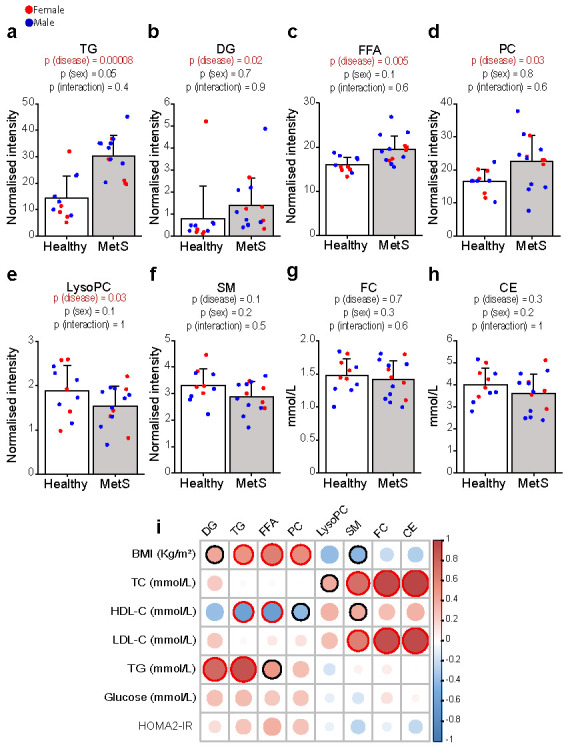Figure 1.

The whole serum levels of major lipid classes in healthy and MetS participants. TG (a), DG (b), FFA (c), and PC (d) were higher in MetS (n = 14), whereas LysoPC (e) were lower as compared with controls (n = 11). SM, FC, and CE (f–h) were not significantly different. Data are expressed as mean ± standard deviation. Statistical significance was assessed using two-way ANOVA using the disease state and sex as covariates; a p-value < 0.05 was considered significant. Detailed differences in the lipid species are described in Supplementary Figure S1 and Supplementary Table S2. (i) Heatmap representing a correlation matrix between metabolic features and lipidomic data in the whole cohort: colour represents the Pearson correlation coefficient (red: positive; blue: negative), and the size of the circle represents significance (red bold borders highlight correlations with p < 0.01; black bold borders highlight correlations with p < 0.05). All lipid species were analysed by liquid chromatography–mass spectrometry except for FC and CE, which were analysed colorimetrically, as reported in the method section. Abbreviations: TG, triglycerides; DG, diglycerides; FFA, free fatty acids; PC, phosphatidylcholines; LysoPC, lysophosphatidylcholines; SM, sphingomyelins; FC, free cholesterol; CE, cholesteryl esters; BMI, body mass index; TC, total cholesterol; HDL-C, high-density lipoprotein cholesterol; LDL-C, low-density lipoprotein cholesterol; HOMA2-IR, Homeostasis Model Assessment 2 of Insulin Resistance.
